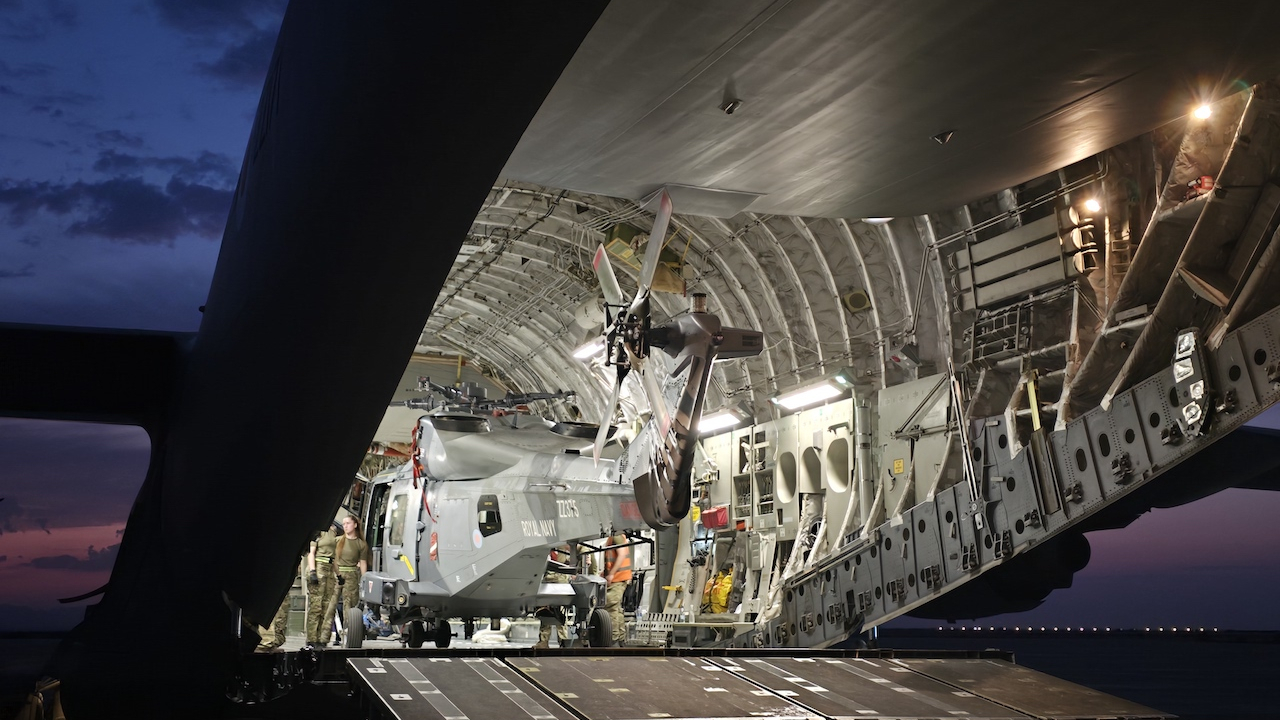Mystery as Libya's 'new' aircraft fly in
Have Egypt and Sudan been re-equipping the Libyan Air Force in violation of a UN Security Council arms embargo? Jon Lake investigates.

The UN panel of experts charged with monitoring compliance with the United Nations Security Council arms embargo against Libya noted that the Libyan Air Force has been partially re-equipped with aircraft, helicopters, weapons and equipment sourced externally in breach of the embargo and has investigated reports that Egypt and the Sudan were responsible for unauthorised transfers of aircraft and helicopters. For it’s part, Egypt categorically denied the charge.
The UN Security Council originally imposed its arms embargo on Libya in 2011, before the present civil war, when Colonel Gaddafi cracked down on pro-democracy protesters.
The embargo remained in force during the Libyan uprising in 2011, when most of the Libyan Air Force’s aircraft were destroyed by NATO airstrikes, and during the subsequent years, as Libya descended into chaos.
This has left the nation in the grip of bitter factional fighting between two competing governments and a bewildering array of militia brigades and Islamist militants and insurgents, all fighting for control of the oil-producing country.
After the Libyan revolution, the new Free Libyan Air Force was left in a parlous state, operating handfuls of disparate aircraft types, including MiG-21bis fighters, and MiG-21UM two-seat trainers, augmented by MiG-23MLs and MiG-23UBs, as well as the two Mirage F1EDs that defected to Malta.
These were augmented by small numbers of Soko G-2 Galebs, J-21 Jastrebs, and L-39s, some An-32 and C-130H transports and a handful of Mil Mi-8, Mi-17 and Mi-35 helicopters. Most were in need of overh
aul, and serviceability was poor.
A second civil war began in 2014, and was fought between forces loyal to the internationally recognised government of the Council of Deputies that was elected democratically that year, (sometimes known as the ‘Tobruk Government’) and forces allied to the rival Islamist government of the General National Congress (GNC), (sometimes called the ‘National Salvation Government’), which rejected the results of the 2014 election and which is based in Tripoli.
Libya's internationally recognised government in Tobruk is supported by the Libyan National Army and enjoys the support of Egypt and the UAE, while the rival Tripoli government has been supported by Libya Dawn, Ansar al-Sharia and Islamic State militias and insurgents, and has been supported by Qatar, Sudan, and Turkey.
Fear of the Libyan Islamist uprising spreading to Egypt led to great concern within the Egyptian Government of Abdel Fattah el-Sisi, which has been quick to support the Tobruk Government and General Khalifa Haftar’s Libyan National Army.
The Libyan Air Force was inadequate to provide sufficient air support for the Libyan National Army, and the chief of staff of the air force, Saqr Jarushi, has worked hard to restore its operational capabilities, sometimes in compliance with the terms of the UN arms embargo, and sometimes possibly in violation of it.To augment its three serviceable MiG-23s (at least two of which were subsequently lost) the air force restored one Su-22UM-3K, one Mirage F1AD and one MiG-23ML to flying condition, and began a long-term project to make 10-12 older decommissioned Su-22Ms at al-Watiya Air Base operational. These had escaped destruction by NATO in 2011, because they had already been withdrawn from use and were stored pending scrapping!
The Libyan Air Force reportedly received two Mi-35 attack helicopters from Sudan in 2012, but one of these crashed soon after, leaving only one in service. In October 2014, the Libyan Air Force received three Mig-21MFs and three Mi-8s, whose markings were consistent with those owned by Egypt. Two further ex-Egyptian Mig-21MFs were delivered at Gamal Abdul El Nasser Air Base in March 2015, alongside four new Mi-35P helicopters for the Libya National Army.
On March 6 this year, a formation of six new MiG-21s and six new Mi-8s reportedly arrived at Gamal Abdel Nasser Air Base. All wore Egyptian-type camouflage and their arrival brought the Libyan National Army’s strength to about 27 helicopters (circa 21 Mi-8s, one Mi-171 and five Mi-35s) and brought the Libyan Air Force inventory to 18 fighters (one Mirage F1AD, 15 MiG-21s, one MiG-23ML, and one Su-22UM).
The UN panel of experts questioned Egypt about the transfers. In its response, Egypt stated that it had not provided Libya with any Mi-8 helicopters, nor any MiG-21MF aeroplanes, and said that the panel’s information regarding the transfers was incorrect. Egypt maintained that it was fully committed to the implementation of resolution 1970 (2011) and subsequent relevant resolutions.
Stay up to date
Subscribe to the free Times Aerospace newsletter and receive the latest content every week. We'll never share your email address.

